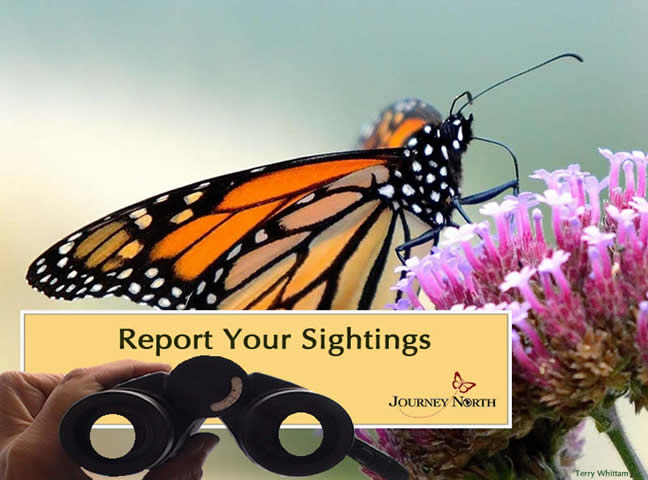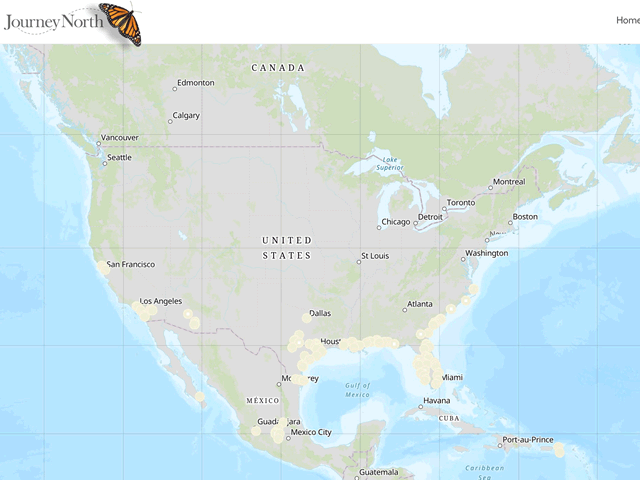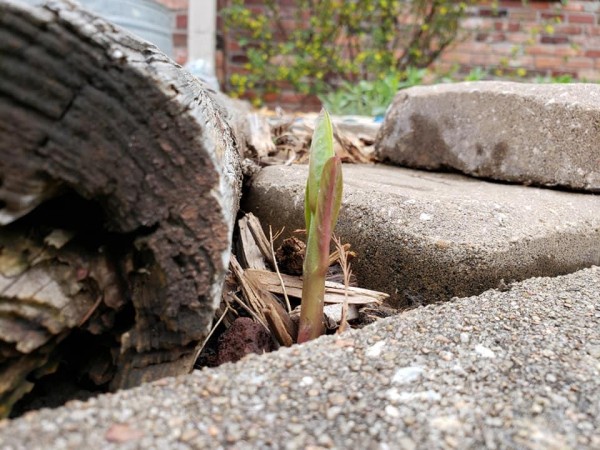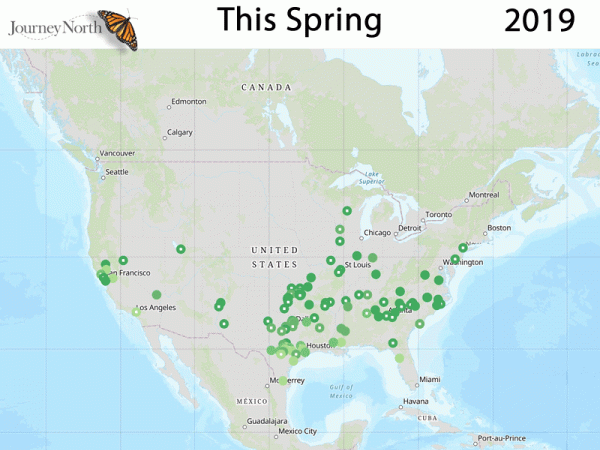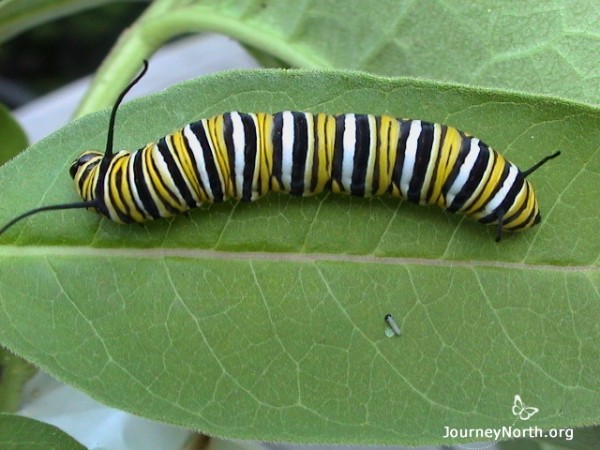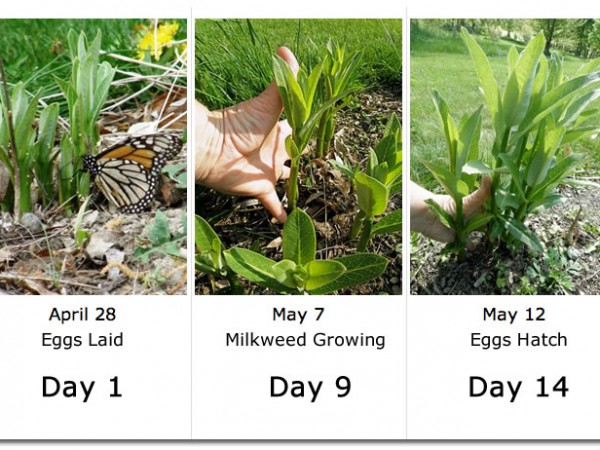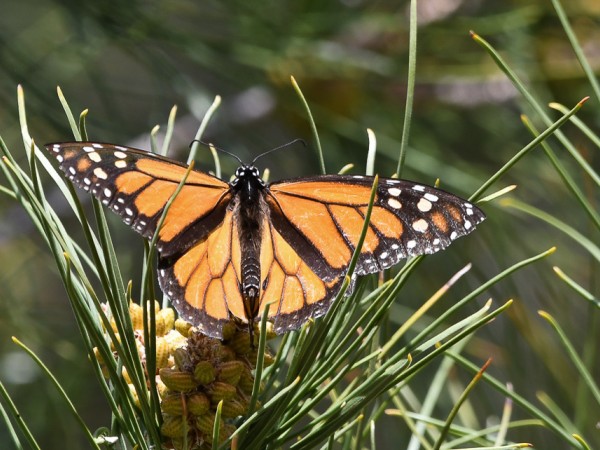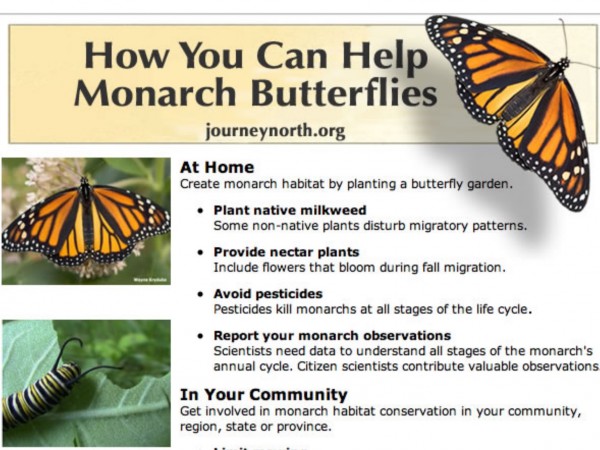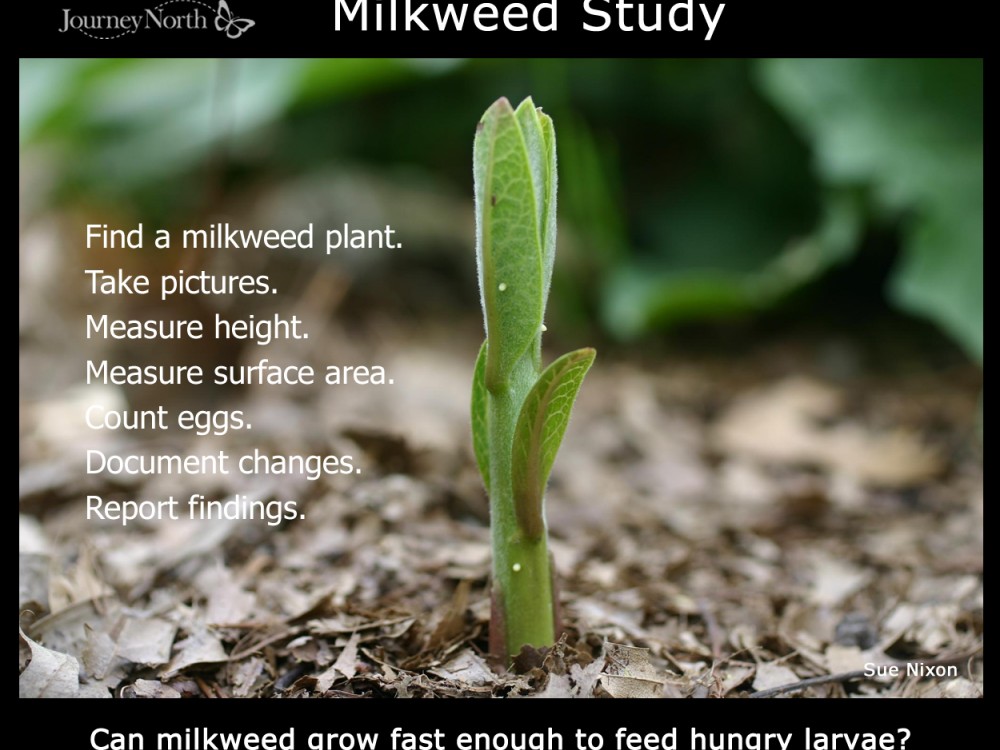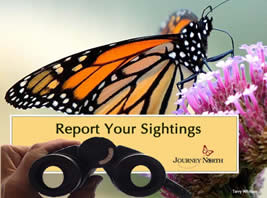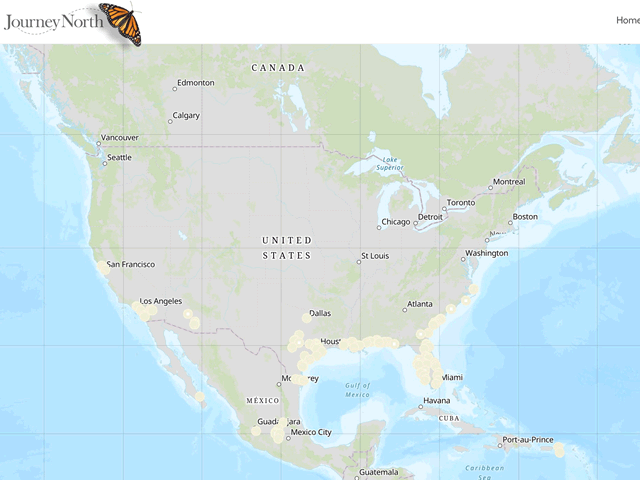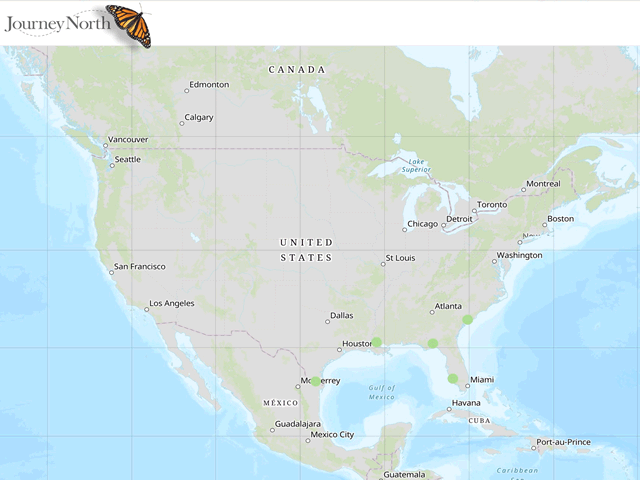Three Cheers for Milkweed
Without milkweed, neither monarchs or their migration would exist. So three cheers for the wonderful weed that makes this all possible.
Inching Northward
The migration moved into Missouri and Kansas after hovering below latitude 36°N for the past 2 weeks. The first monarch for Kansas was a pale and weathered butterfly spotted on April 7th.
"My first thought upon seeing how washed-out it looked is that it must have traveled quite a distance," wrote Marva from Wichita.
Assuming the butterfly flew from Mexico, it has traveled 1,300 miles this spring!
Following Milkweed
The migration follows milkweed emergence closely. Spring temperatures influence how quickly milkweed emerges and years can vary widely. These maps compare spring 2019 to a warm spring (2012) and cold spring (2013). Across the north, milkweed emerged 4-6 weeks earlier in 2012 than in 2013. The migration was unusually early in 2012, too.
Egg-loading Tiny Plants
Monarchs have an uncanny ability to find even the tiniest plants. This spring, many people are reporting small plants loaded with eggs and wondering:
- Will there be enough milkweed to feed the hungry caterpillars?
Milkweed Loss: Conservation Challenge
For the eastern monarch population, the agricultural fields of the Midwest are at the center of the monarch's prime breeding habitat. The loss of milkweed there is a major contributor to the decline in the monarch population as explained in this scientific paper by Dr. John Pleasants and Dr. Karen Oberhauser.
How can you help? One way is to plant milkweed at home and in your community. Use regionally appropriate native milkweeds wherever possible. We recommend these resources from the Xerces Society and the Monarch Joint Venture:
- Milkweed Guide to help you find milkweed species recommended for your region.
- Gardening for Monarchs to help you attract monarchs and other pollinators.
- Milkweed Seed Finder to help you find a milkweed seed vendor in your area.
Western Population: Monarchs Reach Nevada
A cheer filled the air as monarchs surged north into the Nevada deserts this week cruising the Colorado River flyway! Meanwhile, monarchs also journeyed north into Arizona and New Mexico as new sightings appeared. Almost all of the new observations reveal worn and frayed monarchs. More...
Spring Migration 2019
Report all monarchs you see — adults, eggs, larvae.


